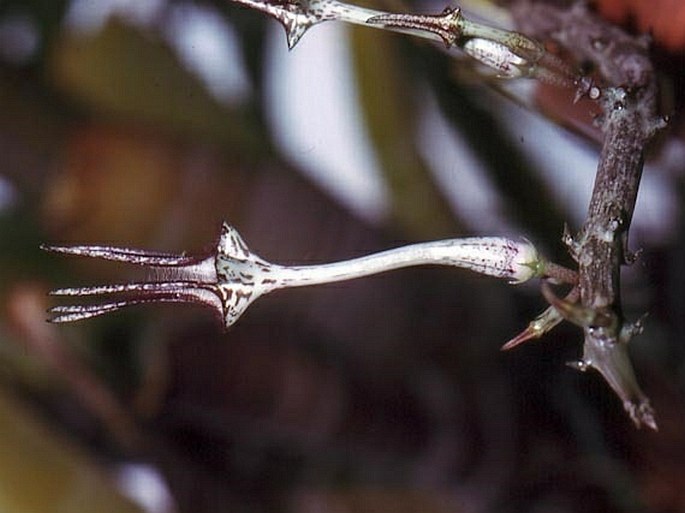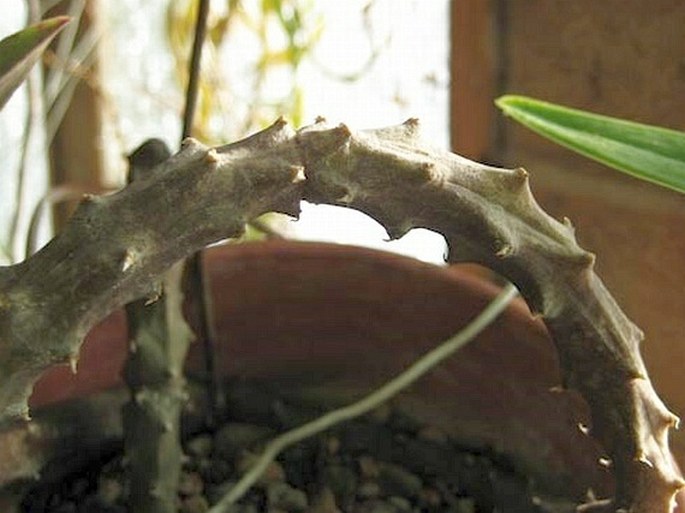Family: Apocynaceae Juss.

Distribution: Republic of South Africa (Eastern Cape, Gauteng, KwaZulu-Natal, Limpopo, Mpumalanga), Swaziland, and recently found on border of RSA and Zimbabwe and in Namibia.
Ecology: Found in grass, gravelly soil, in the rocks, even in full sun. Blooms after summer dormancy.
Description: Perennial succulent plant. Stems creeping, scrambling or occasionally twining, sometimes re-entering the ground, trailing up to 1.5 m long; somewhat round, 10–20 mm thick, with prominent tubercles, olive green, often mottled or striped with reddish brown, slightly glossy. Leaves triangular, about 3 mm. Flowers on 6–10 mm peduncles, 4 or more together, upturned, 5.5–6.5 cm long, funnel-shaped towards the tip, lobes spreading, pointy, outer surface white, apically and laterally often red-violet, glabrous, brown spotted, inner surface white, haired; pollinia kidney-shaped, 0.3 mm. Fruit grey green, broadly fusiform, about 10 cm long, verruculose.
Note: Two subspecies show a disjunct distribution throughout RSA.


These images were taken in culture (Canada).


